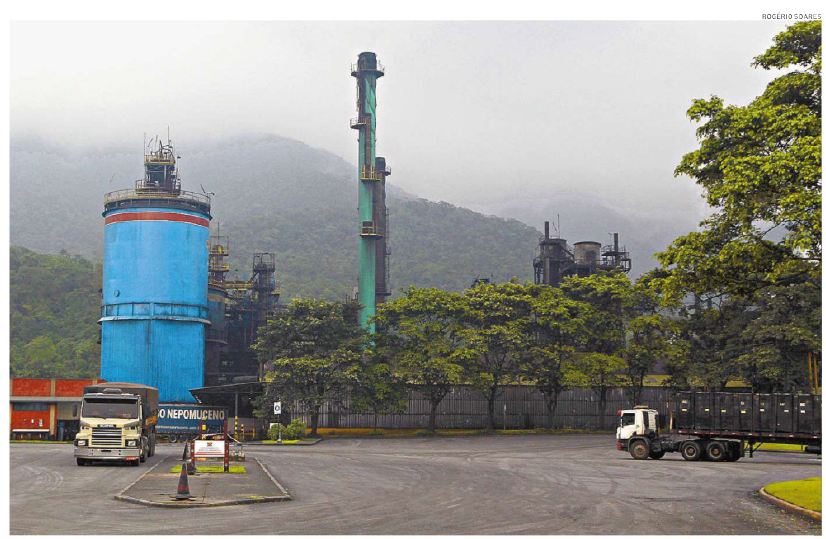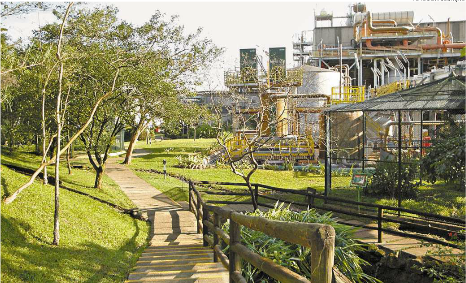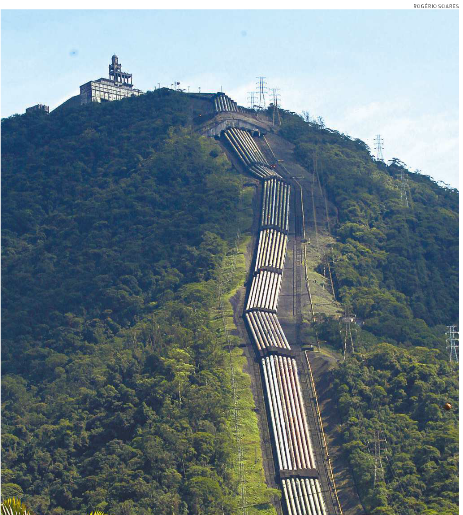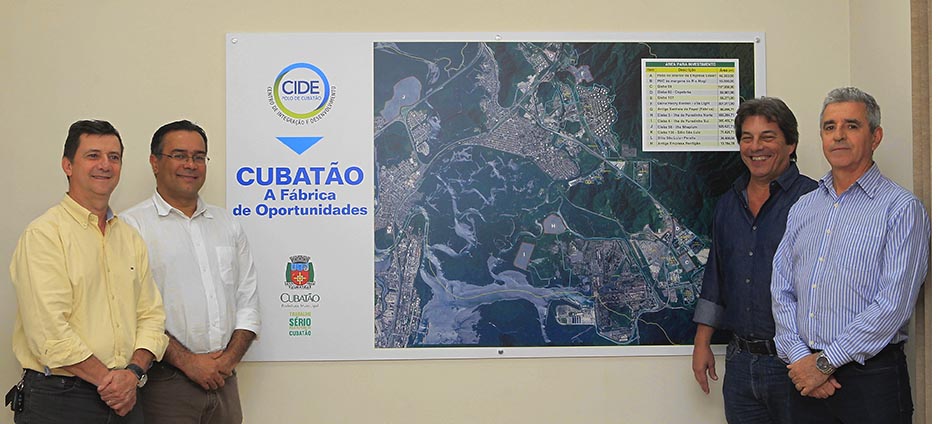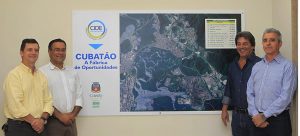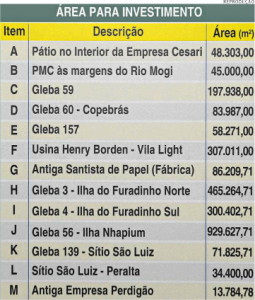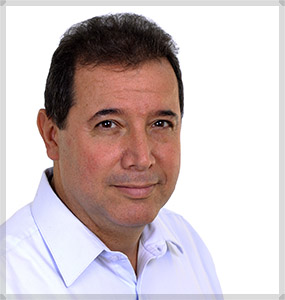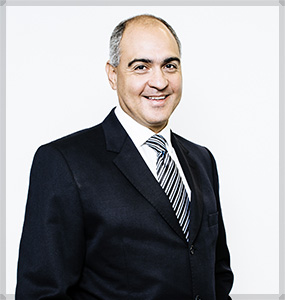The Indian-owned company is completing 60 years of installation in the City, leading the carbon black market

Consolidated as the second largest manufacturer of carbon black in the world, Birla Carbon completes this month 60 years of installation in Cubatão. And its president for South America, Ronaldo da Silva Duarte, points out that the company, in the process of technological modernization and expansion of production, is one of the best examples of which the Cubatão Industrial Pole is an exceptional factory of opportunities for new enterprises. The company, which also has units in Camaçari (Bahia), produces one of the most used raw materials on the planet. Carbon black is part of everyday comfort: it gives the black coloration in the composition, among other products, of tires, plastics, garbage bags, and coating of electric conductors.
This potential of use makes it a company of the base product manufacturers (used by other factories to make the final product) set up in Cubatão able to offer raw materials to investors who want to implant in the City processing industries in diverse branches ranging from the production of tires, automobile finishing equipment for vehicles, rubber products, coatings for ducts and electric conductors, plastic material and paints. A member of the board of the Brazilian Chemical Industry Association (Abiquim) and the Center for Integration and Development (Cide) and Center of Industries of the State of São Paulo (Ciesp) in Cubatão, he has always been an enthusiast of the implantation in the Municipality of the same instruments of action that allowed the growth of the center of Camaçari, among them an industrial condominium that facilitates the activities of this set of factories.
“When it began to be installed in Bahia, the Camaçari center also had chemical and petrochemical companies of basic products. When we implemented our black carbon factory in 2007, several processing companies also settled in Bahia, during the same period, mainly industries that mix plastic with carbon black”.
He sees in the Cubatão Program a Factory of Opportunities a path to follow. “I see that at Cubatão’s pole we are also at the beginning of an activity growth of the transformation industries. I was at the launch of the Cubatão Program an Opportunity Factory, a proposal of synergy between the polo companies and the City Hall to generate new jobs. The idea follows the same objectives of Camaçari. The municipal government should create a conducive environment for development. And depending on what the new Federal Government does, early next year, a lot of people are going to take out of the drawer investment projects in the Cubatão center. And this will be a great opportunity for anyone who is investing in the basic products manufacturing industries in Cubatão”.
Company generates energy by taking advantage of the residual gas
According to Ronaldo Silva Duarte, committed to sustainability, Bila Carbon Brasil develops a continuous work to optimize the use of energy and also environmental preservation in its factories.
Residual gas
An example of this is the reuse of tail gas (Tail Gas), using it as a fuel in the production process itself and also in the production of electricity and steam – which, in addition to making Bila Carbon self-sufficient in energy consumption, still allows the company sell the surplus to other industries.
Factory is a pioneer in the production of carbon black
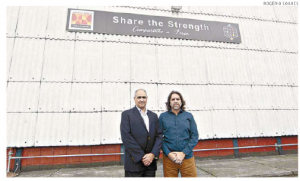
Bila Carbon is one of the largest global manufacturers and suppliers of carbon black, product technically called Carbon Black.
Bila Carbon has been a pioneer at the polo since 1958 in Cubatão.
It also produces and markets electric power, tail gas and steam, operating a 27MW Co-Generation installed at its production facility in Cubatão for more than 15 years.
The activities are within the principles of sustainability. Ronaldo Silva Duarte points out that at the age of 60, the factory is constantly updating itself.
In Cubatão, the production capacity of carbon black is 210,000t/y. The industrial unit in Camaçari has a production capacity of 75,000t/y and also sells tail gas.
Tail gas is the result of the production of carbon black, which generates as a by-product a tail gas with sufficient energy power to be reused in the unit’s own production and cogeneration of electric power and steam, making the industrial units self-sufficient in energy, generating environmental and energy gains.
Among the new products launched by Birla Carbon on the market is the high performance carbon black for use by the pneumatic industry, reducing tire rolling resistance and minimizing fuel consumption and CO2 emissions.
Being one of the main business of the Indian Aditya Birla Group, it is present in 12 countries, on 5 continents, with 16 manufacturing units around the world. With production capacity of more than 2 million tons per year.
Indian group
The Aditya Birla Group is a leading global conglomerate in most of the segments in which it operates. Present in 35 countries on six continents with more than 130 manufacturing facilities and employing 120,000 people from 42 nationalities around the world. The acquisition of Columbian Chemicals Company in 2011 by the Black Smoke business of the Aditya Birla Group kevou the formation of Birla Carbon, becoming the global leader in the manufacture of Smoke Black. Present in each of the major markets in Asia, Europe and the Americas, Birla Carbon offers consistent quality products and services around the world. With a strong presence in South America, Birla Carbon has two factories in the country’s main industrial centers: in Cubatão, in the state of São Paulo, and in Camaçari, Bahia and offices in São Paulo.
Product enters the composition of tires
Known as Carbon Black, carbon black is one of the oldest chemicals, with records of its use more than 5,000 years ago when Chinese and Egyptians used the so-called “black powder” in murals and printing paints. Its composition is basically carbon, obtained from the thermal decomposition of oils rich in hydrocarbons. “Our product is an essential raw material for the manufacture of various products such as tires, rubber products and also plastics and paints,” explains engineer Roberto Ferreira, director of the Birla Carbon industrial unit in Cubatão.
Did you know?
1. Without carbon black, a rubber tire would not have durability to be used for more than 100km.
2. Electrical wires and cables are more efficient, safer and provide better power distribution thanks to carbon black.
3. Carbon black on tires means longer tread life, longer durability and greater safety.
4. The black glow that catches attention in any new car, truck, home appliances or cell phones is made possible by the use of carbon black.
5. Cell phones, televisions and other electronic devices are protected due to the ability of the carbon black to reduce the buildup of static force.
6. Many of the world’s banknotes contain ink made exclusively from Birla Carbon products.
Source: A Tribuna Newspaper

